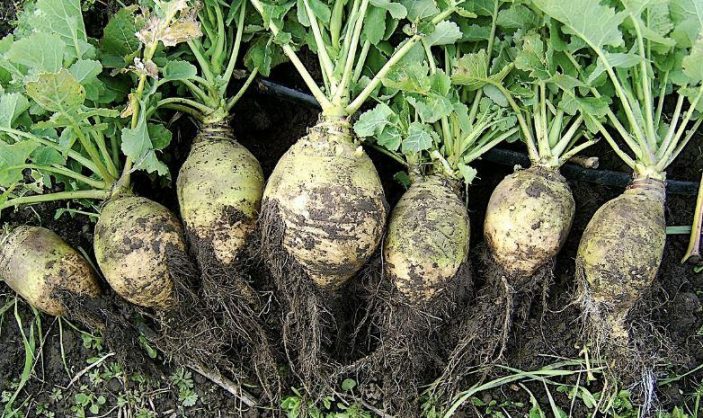Swede (Swedish turnips), rutabaga (Swedish) or neep is a name given to a root veggie produced by crossing turnips and cabbage. Its roots and leaves or tops are both edible by humans or they fed to animals especially during the winter season when animals are given the roots and tops or allowed to forage their tops
This vegetable is loaded with carbohydrates (including sugars and dietary fibers), vitamin B complex and C, as well as minerals such as calcium, iron, magnesium, manganese, potassium, phosphorus and zinc
Are they safe?
With an idea of what this vegetable is, it is time to address the issue of its safety and suitability to bunnies. Is swede safe, what about its tops and peelings? The answer is yes, both the tops and roots are safe. Save a Fluff, The Rabbit House among other authority sources confirms this fact

Away from the discussions of this veggie’s safety. The next important thing you deserve to know is the correct amounts of each (the root and tops) to avoid stomach upsets (diarrhea, gas, bloating, and so on).
For the swede (the root and peelings), the recommended quantity is a teaspoon per 2lb. weighing rabbit. It should be an occasional treat. Only serve your bunnies with one treat a day and keep varying them to maximize their nutritional benefits.
Non-leafy vegetables tend to be higher in carbs and lower in fibers. Therefore, the quantities must be kept very small
On the other hand, if you are talking about tops (leafy and stem), then you need to give them about a packed cup of 5-6 different leafy vegetables, one of them being swede tops per a rabbit whose weight is 2lbs. Ensure there is only one high oxalic acid veggie and avoid combining those with high calcium amounts.
Other basics will be ensuring their source is free of insecticides, pesticides or herbicides, going for fresh ones, washing them, and introducing them gradually as you do to any other fresh foods.
In the case of intestinal disturbances, discontinue and revert to foods that your rabbit is already accustomed to
Conclusion
Swede, its leaves, stems, and peels are all safe for your fluffy friend. However, you should ensure you give them in the amounts we have recommended. Never forget that these pets depend on mainly hay and fresh foods should only account for 10-15% of their diet requirements.
Thank you for visiting
